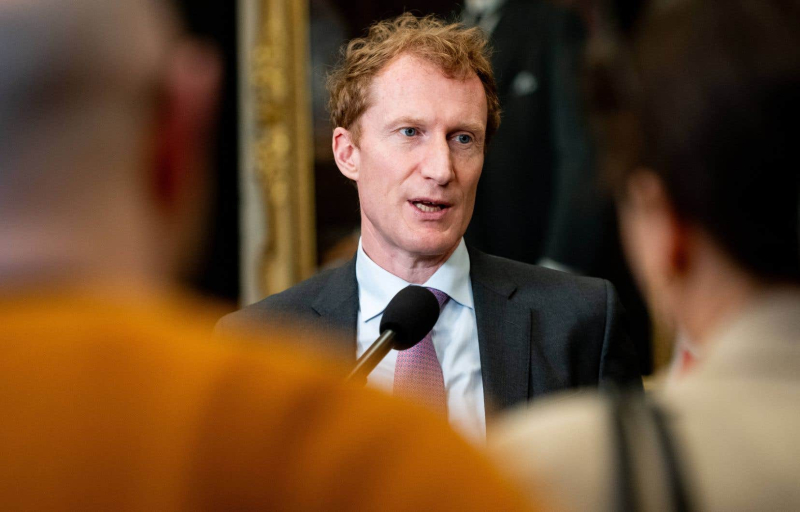
Photo: Spencer Colby The Canadian Press Federal Immigration Minister Marc Miller at the Canadian Parliament in Ottawa on May 6, 2024
Benoit Valois-Nadeau
Published yesterday at 7:11 p.m. Updated yesterday at 11:15 p.m.
- Canada
The federal Minister of Immigration, Marc Miller, and his provincial counterparts agreed on Friday on the creation of a working committee which will look into the question of the geographical distribution of immigration applicants. asylum in the country.
The initiative, launched by the Quebec Minister of Immigration, Christine Fréchette, should ultimately make it possible to better distribute asylum seekers, who are currently over-represented in Quebec and Ontario.
“It’s no secret that Quebec and Ontario have welcomed a disproportionate number of asylum seekers and that this has impacted health services, education and the housing market. Quebec is well placed to welcome these asylum seekers, just like the rest of Canada, but there are reception capacity issues. Their number is significant and has been increasing for several years,” mentioned Minister Miller, at the end of the forum of ministers responsible for immigration, held in Montreal.
Marc Miller said Quebec and Ontario have done “more than their share” in welcoming asylum seekers in recent years and that other provinces had “raised their hands” to receive more, including in the Atlantic.
This announcement was welcomed by his Quebec counterpart, who described it as “an important step forward” and who sees it as “a recognition of the disproportionate weight [ which weighs] on Quebec and Ontario in terms of welcoming asylum seekers.”
According to Minister Fréchette, the consultation table will make it possible to “better coordinate the flow of asylum seekers throughout Canada and to ensure that the resources to support this flow are available.”< /p>
No timetable has been determined for the moment.
Minister Fréchette notably cited similar mechanisms within of the European Union, Germany and Switzerland as potential sources of inspiration.
“We will draw inspiration from what is done at the foreign and what fits best within the Canadian dynamic. Different provinces will have particular concerns about the type of asylum seekers they want prioritized. This is our case,” she mentioned, citing the French language as a criterion for reception in Quebec.
Mr. Miller assured that the movement of a province would be done with the consent of the people concerned and in a “humane” manner.
Disagreement persistent
Quebec and Ottawa still need to agree on the number of these asylum seekers.
Recently, the office of Immigration Minister Christine Fréchette maintained that Quebec received approximately 45% of all asylum seekers from Canada in 2023 and 64% in 2022.
However, according to open data from Immigration, Refugees and Citizenship Canada (IRCC) consulted by Le Devoir, which take into account interprovincial migration, rather, Quebec had received on its territory in 2023 35% of asylum seekers from all of Canada.
Still according to these data, between a quarter and a third of applicants leave Quebec for other provinces after their arrival.
“Many temporary migrants arrive Montreal-Trudeau and, for one reason or another, go to Ontario. We must calculate them adequately in the allocation of resources,” insisted Minister M. Miller.
“We should not necessarily rely on the first place where people apply, but where they reside, to truly reflect the impact on a particular jurisdiction. »

